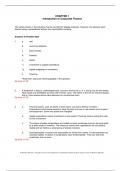Examen
Solution Manual for Principles of Corporate Finance 14th Edition by Richard Brealey, Stewart Myers, Franklin Allen and Alex Edmans
- Grado
- Institución
Solution Manual for Principles of Corporate Finance 14th Edition by Richard Brealey, Stewart Myers, Franklin Allen and Alex Edmans
[Mostrar más]



